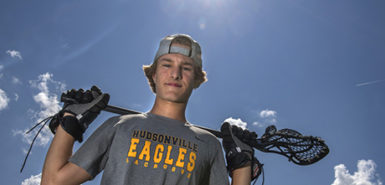
Scores of students in middle and high school are no doubt sizing up their sports opportunities for the coming school year.
Some will be lured by full-contact competition—think football, wrestling and rugby—while others will opt for sports that appear a touch safer, such as golf, tennis or bowling.
Inevitably, your child’s decision will boil down to a hodgepodge of factors, everything from personal taste and unique ability to peer and parent pressure.
But if you’re a parent, or someone positioned to influence a child’s decisions, there’s one thing you should keep in mind before you help your youngster pick a sport.
Risk is inherent on every court, in every field and every venue.
It’s unavoidable.
Parents and caregivers can certainly influence a child’s decision, but it would be misguided to steer a youngster one way or the other in hopes of reducing risk of injury.
Because, again, every sport comes with risk.
“Even in bowling, there’s a chance you could injure yourself … slipping on the slick lane and then hitting your head,” said Matthew Axtman, DO, an orthopedic sports medicine physician with the Spectrum Health Medical Group. “There’s never going to be a sport where you’re going to say, ‘You know what, you’ll be (risk-free).’”
Invariably, there will be moms and dads who try to coax their brood into sports that seem safer.
“You can’t look at a sport and say, ‘There’s a risk of injury there … I don’t want you playing that,’” Dr. Axtman said.
“I don’t think you should have the mindset going in, saying, ‘Well, let’s pick a sport and see which one has the least risk of injury,’” he said. “There’s going to be a risk of injury in everything.”
If your child expresses an interest in a sport, you should take a moment to make sure they understand the risks and rewards.
“You sit down and talk about those things,” Dr. Axtman said.
Hockey, basketball, soccer, cheerleading, football, baseball, cross country—they all come with the possibility of pain.
“You could be playing soccer and say, ‘There’s going to be a high risk of ACL tear,’” he said. “Or basketball saying, ‘There’s going to be a high risk of an ankle sprain.’”
The good news is there’s just one simple word to keep in mind as you set out to emphasize safety for your aspiring athlete: knowledge.
Steeped in technique
Athletes who are conditioned and properly trained with the right techniques relevant to their sport are more apt to avoid serious injuries. The best thing parents can do is simply encourage their aspiring athletes to play sports—whatever sports they like.
“One of the most important things is making sure kids are active and doing things, (ensuring) kids are maintaining a healthy lifestyle,” Dr. Axtman said. “It gives them leadership, it gives them a sense of camaraderie, a sense of well-being. It gives them a healthy lifestyle. These things are really important.”
Beyond that, you should use good judgement in choosing a sport suitable to your child’s body type.
“Do you want a very lean, non-muscular individual playing running back in football? No,” the doctor said. “They’re probably going to be more prone to playing soccer, or baseball or something else like that. You have to look at body types and determine whether or not a sport is going to be for that individual.”
Should your novice skier take a quick jaunt down a black diamond trail to see how it goes?
“No, there’s going to be a major risk of injury to that,” he said. “It’s just a matter of being smart about what that child is capable of doing.”
Place ample emphasis on acquiring knowledge and technique.
Smartly, safely
The American Academy of Pediatrics has some tips for reducing sports injuries. Here are some of the highlights:
- Use proper technique. This should be reinforced during the playing season.
- Play safe. Enforce strict rules against headfirst sliding (baseball and softball), spearing (football), and checking (in hockey).
- Wear the right gear, including properly fitting protective equipment. Never assume protective gear will prevent all injuries while performing dangerous or risky activities.
- Strengthen muscles. Conditioning exercises during practice strengthens muscles used in play.
- Increase flexibility. Stretching exercises after games or practice can increase flexibility. Stretching should also be incorporated into a daily fitness plan.
- Take breaks. Rest periods during practice and games can reduce injuries and prevent heat illness.
- Do not play through pain.
- Avoid heat illness by drinking plenty of fluids before, during and after exercise or play; decrease or stop practices or competitions during high heat/humidity periods; wear light clothing.
No matter what you do, whether you’re teaching tackling techniques or the mechanics of the golf swing, there will always be a risk of injury.
“We’re never going to wipe out the risk in any sport,” Dr. Axtman said. “But we can definitely try to prevent injury by playing smartly and safely.”
 /a>
/a>
 /a>
/a>
 /a>
/a>